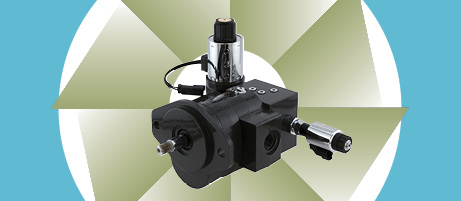Perfect Proportion: Closed Loop Control for Mobile Applications
By Ben Dupre, Senior Technical Writer, HydraForce.
Control for critical applications like autonomous steering has resulted in complex strategies to manage hysteresis, threshold, coil temperature, and other challenging variables in mobile hydraulics. The reliable control we’ve achieved was bought with much toil, including costly development and intensive tuning efforts to match the needed performance and field adjustment to correct system and component variation. Servo control is an excellent technology that is used widely in industrial hydraulics, but cost and durability have been significant barriers in mobile applications. These industrial servo controls are not designed for the harsh operating environments mobile machines work in every day. Cartridge valves fit well in a broad range of mobile applications, and HydraForce has built its portfolio around the demands of this market.
The mobile hydraulics industry is ready for new technology. The leap forward comes with the adaptation of closed loop control in cartridge valve applications. Closed loop control employs feedback that defines an error or difference between actual and intended results, in this case spool position. Closed loop control can adjust its output to correct the error. The corrections are calculated and applied many times per second, faster than a vehicle operator could. This makes closed loop control very accurate and adaptive to internal variation such as manufacturing tolerances, hydrodynamic forces, and external factors like fluid condition, coil temperature, and load changes.
With Innercept digital proportional control, HydraForce combines servo valve accuracy and repeatability with cartridge valve flexibility and compactness less expensively than industrial-style servo valves. Innercept uses the SP10-P57FL fast-acting minimum-lap proportional directional valve, which is useful in auto-steering applications due to its excellent linearity and responsive actuator. HydraForce research and development is also exploring this technology with other products, such as the PV line of pressure-compensated proportional flow controls and our PE piloted proportional directional valves.
The new digital proportional control integrates a linear variable displacement transformer position sensor with coil-mounted closed loop control. This integrated LVDT gives spool position accurate to within 0.11 mm (0.005 in).
The LVDT is a sensor that provides a signal variable to the axial position of a sensing core within a transformer. A driver circuit powers the primary winding with a constant amplitude AC supply and processes, rectifies, and filters the secondary current to provide a 0 to 5 V proportional output. This forms the feedback leg of the PID control. The sensor is adaptable to any HydraForce proportional actuator.
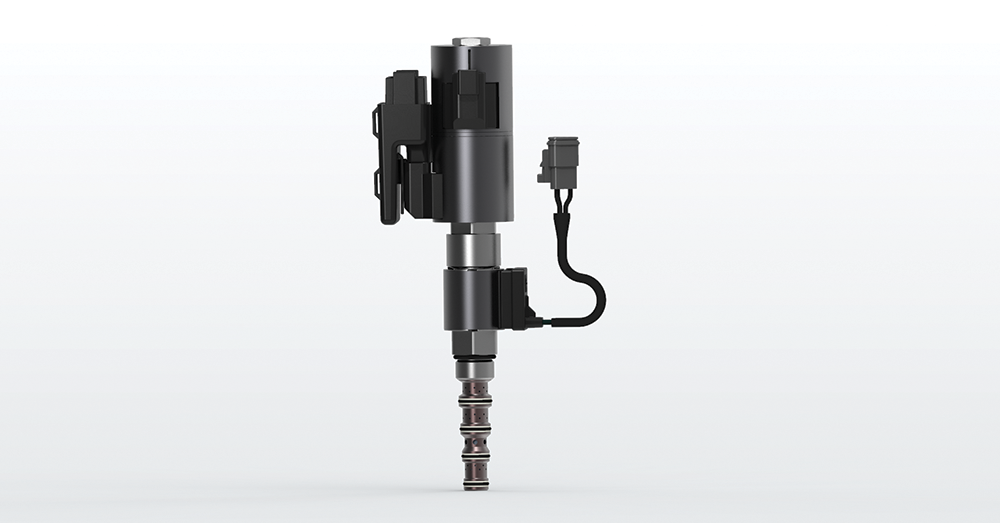
The SP10-P57FL low-flow proportional directional valve with position sensor.
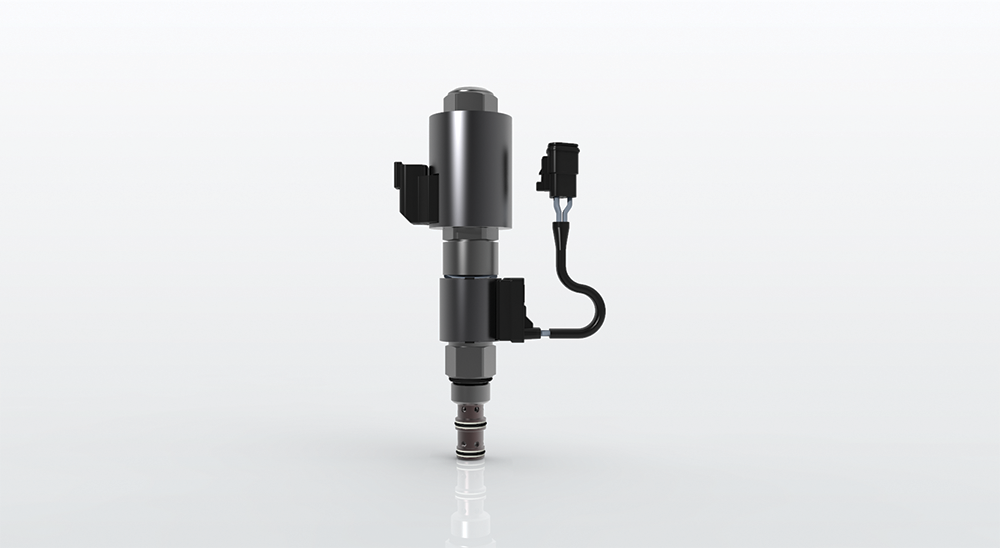
The PV72-P30 three-way compensated proportional flow control with position sensor.
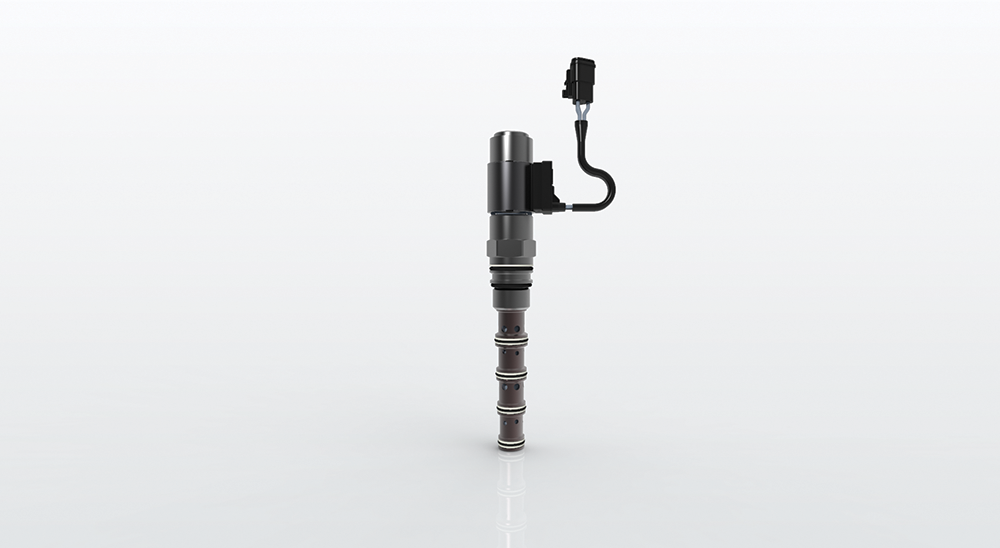
The PE12-S67X piloted proportional directional valve.
PID control
The ESDR-0201A is built on the successful HydraForce ExDR platform of valve drivers. With CAN networking, two PWM outputs, and one analog voltage input, its main function is a closed loop PID controller. The control receives a set point as a CAN message and can transmit status and diagnostic messaging back to the network. The vehicle designer sets parameters using HF-Impulse configuration and programming software, available for free download. This simple but powerful control offers greater stability with advanced parameters such as feed forward, windup guard, output limit, derivative filtering, integral window, and duty-cycle minimum. These additional control parameters allow fast response and greater control when tuning a PID loop.
HydraForce has precisely tuned this loop to optimize performance. The tuning fits most applications. But with the flexibility of the ESDR-0201A, users control all available parameters. Because the PID loop controls for spool position, not coil current as with other closed loop controls, it is able to virtually eliminate hysteresis, which typically limits the accuracy and repeatability of hydraulic controls. Also, because of the out-of-the-box optimized tuning, the control exhibits excellent step response, making it suitable for critical applications such as steering control in autonomous vehicles.
The digital proportional control is built on the existing SP10-57FL platform. This directional flow control features a minimum lap spool. It is optimized for a responsive profile. In addition, HydraForce engineers designed and optimized the PID control, resulting in a 45% to 75% improvement in step response compared to open loop control of the same hardware.
Common wisdom dictates that what we can measure, we can manage. With position feedback, the control system is always aware of the valve position, making it easy to manage and resulting in repeatability from valve to valve in all operating conditions. Traditional directional flow control valves can have a tolerance profile that allows variation in threshold, which must be adjusted for and controlled for accurate operation. Because it controls to a given spool position, the digital proportional control eliminates the need for threshold adjustments and controls threshold variation naturally. It also compensates for temperature changes that cause an increase in coil resistance and reduce maximum flow.
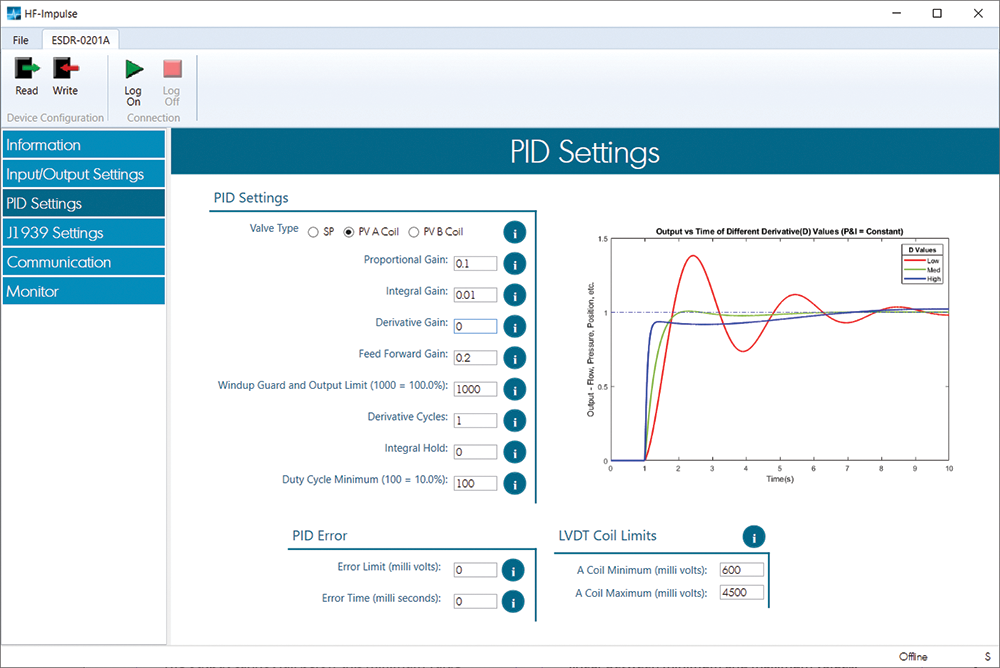
Hydrodynamic flow forces
While HydraForce flow control designs are informed by the latest CFD analysis tools and practices, hydrodynamics can still affect performance under certain conditions. A spool valve can begin to washout or self-shift as these forces overcome the actuator force, restricting flow. A major advantage of the digital proportional control is that it can increase the coil current to maintain the set point if feedback indicates washout is occurring.
Because of position feedback in the PID control loop, the digital proportional control achieves a perfectly linear flow profile, a feature not possible with open loop control. This is true plug-and-play operation, and it means the vehicle controller only has to manage the requested valve opening. It does not need to provide scaling profiles, perform current correction, or manage hysteresis.
The benefits of closed loop PID control are well known to industrial process controls. To date the technology has had a targeted impact in the mobile hydraulics sector, being adopted primarily in high-spec, less cost-sensitive applications and on functions with critical performance demands. The demand on mobile vehicle controllers to execute PID across the spectrum of machine functions drives applications into faster, higher cost, higher I/O devices. HydraForce addresses these barriers to adoption with a unique distributed control strategy that allows simple plug-and-play CAN networked, coil-mounted drivers that can be easily added to individual functions as needed. Building a modular mobile machine architecture this way gives vehicle designers flexibility to develop solutions that fit within ever tightening cost and performance parameters.
Innercept digital proportional control has many potential applications. Examples include auto-steering applications on agricultural tractors and earthmoving or grading equipment; semi and fully autonomous municipal vehicles like sweepers, salt spreaders, and refuse trucks; specialized harvesting equipment; precision application of agricultural chemicals; precision paving and road-milling machines; and railroad maintenance equipment.
Digital proportional controls are perfect for applications in which precision and response are key. With a fast-acting, repeatable directional flow control, one can achieve more stable autonomous functions like automatic steering or precise placing cargo in a narrow storage bay. More control-by-wire applications can open the use of rental machines to a broader range of less experienced operators. New possibilities are emerging every day.




